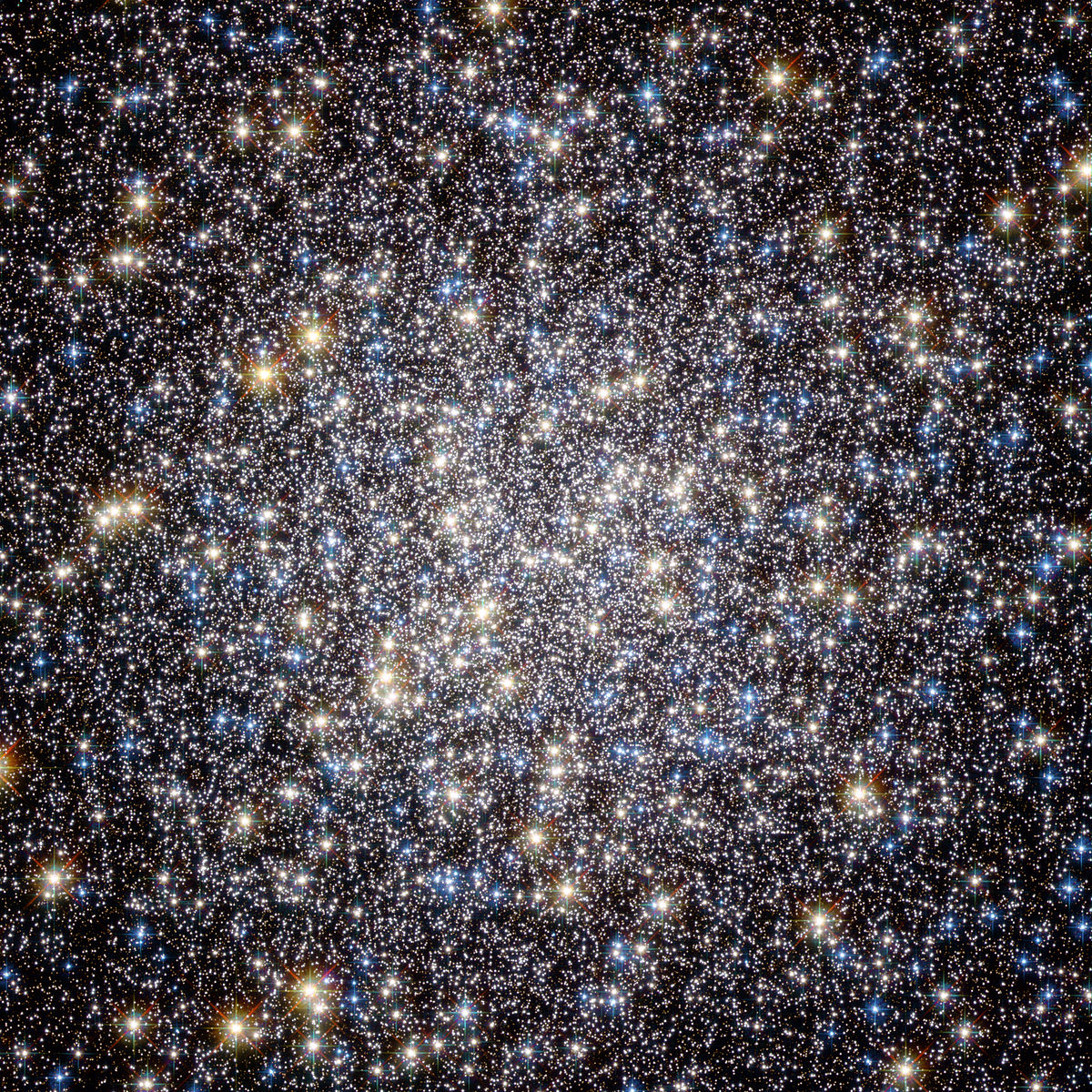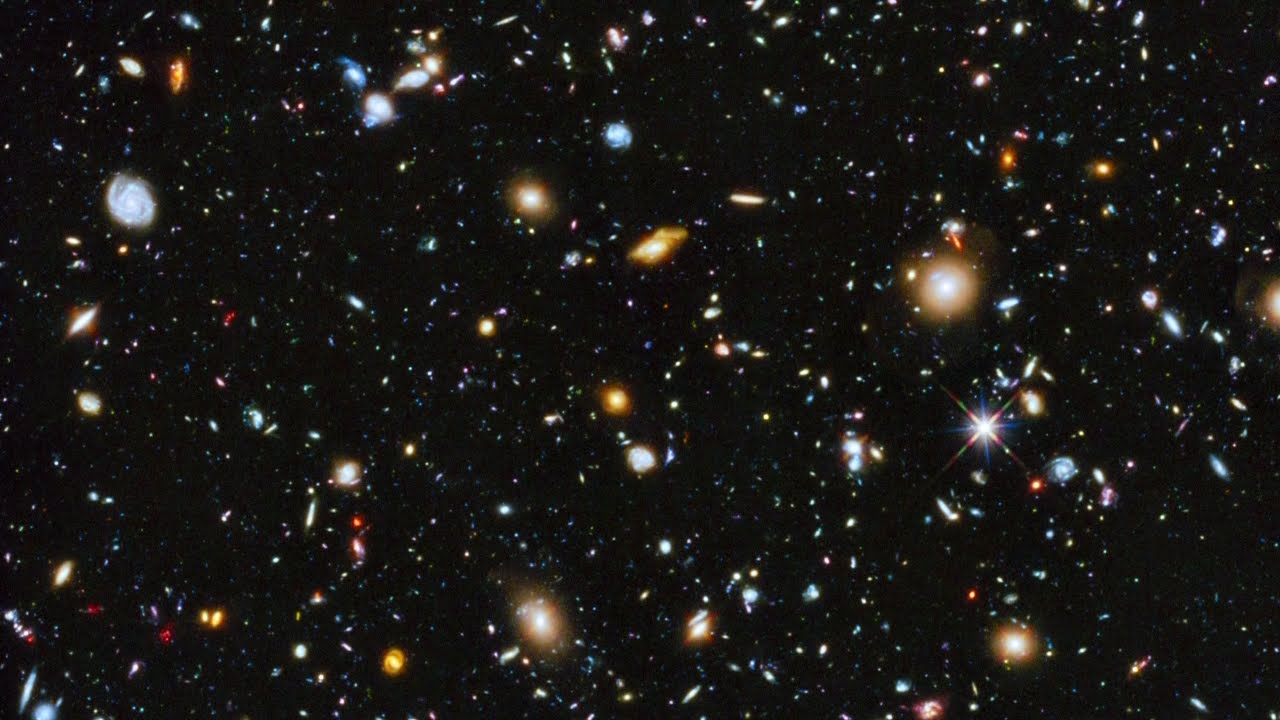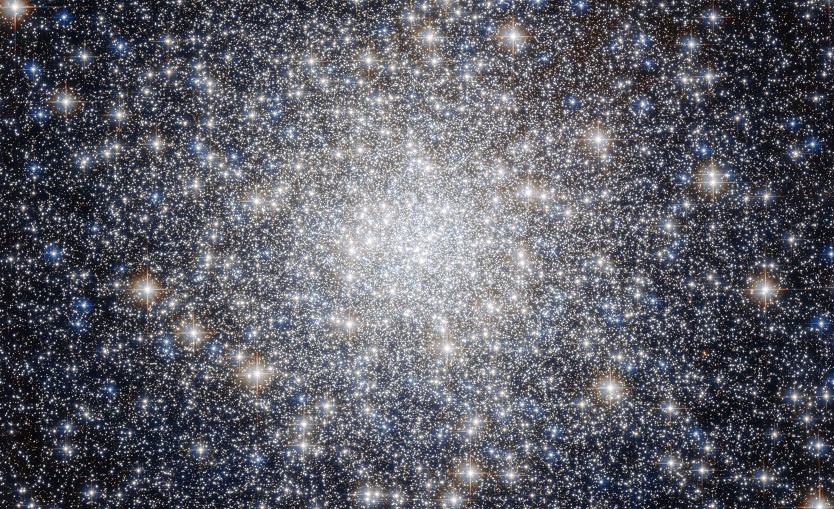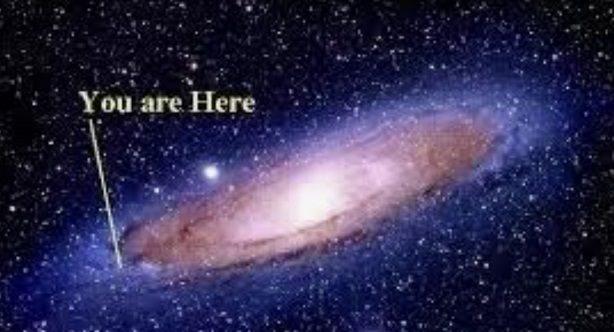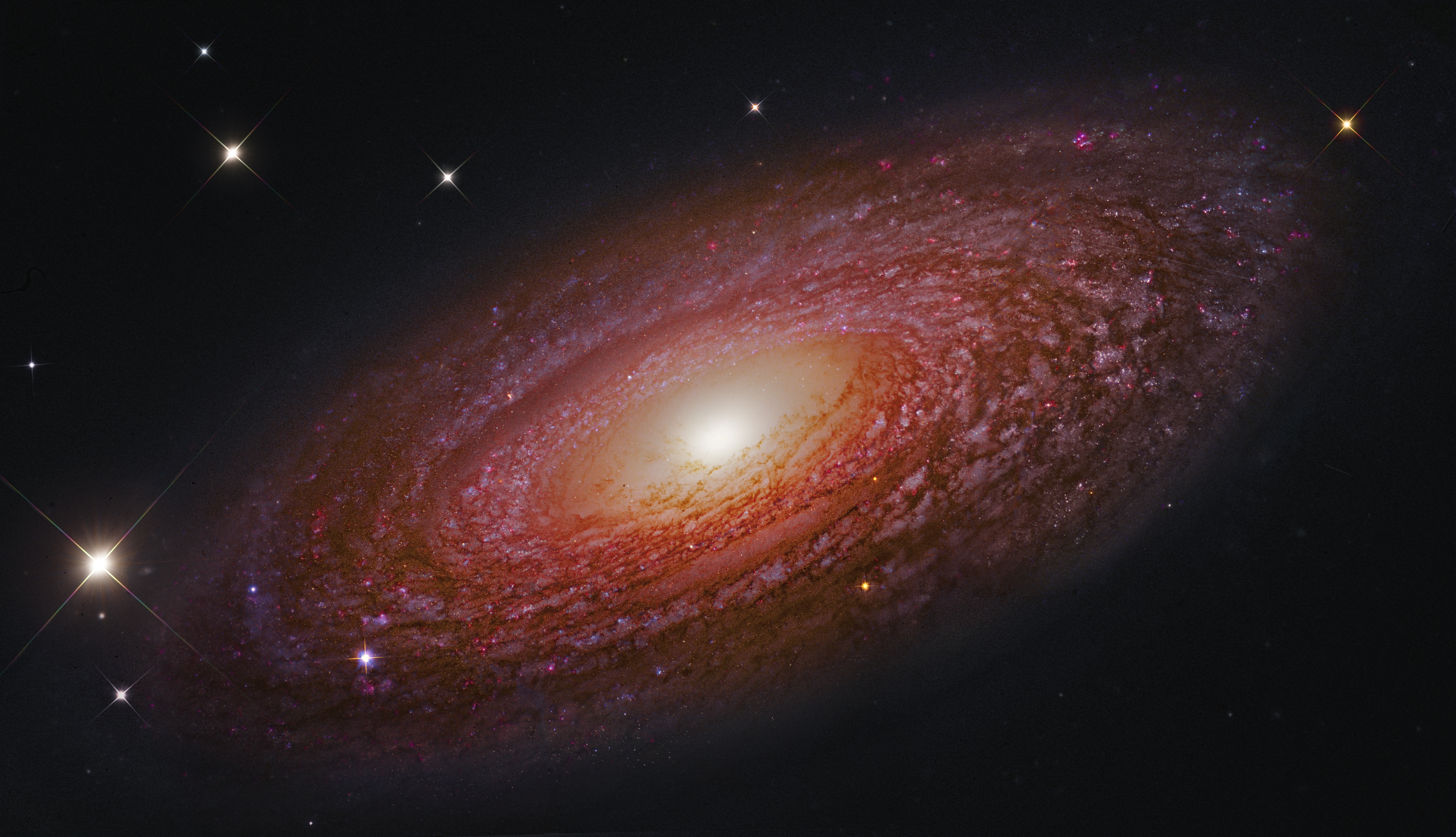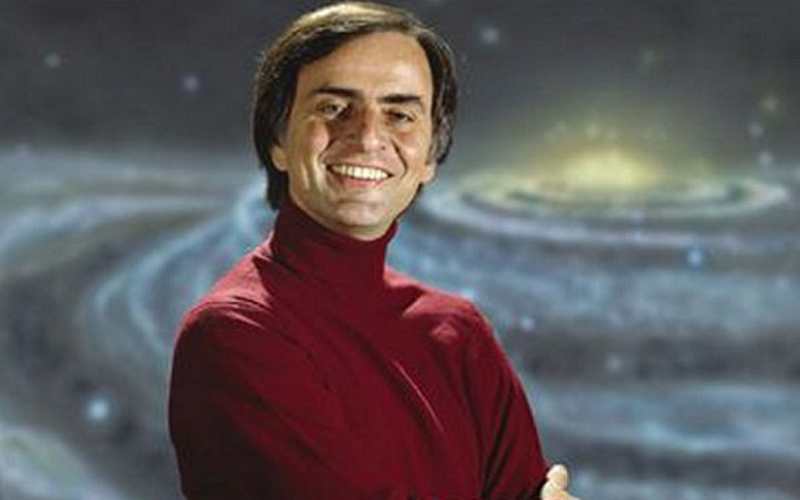|
home | what's new | other sites | contact | about |
||||||||||
|
Word Gems exploring self-realization, sacred personhood, and full humanity
Editor’s note: We learn from the afterlife reports that, as we develop ourselves in the next world, we will enjoy an array of expanded abilities presently unknown to us. In addition to augmented cognitive powers, we will be capable of traveling at the speed of thought. With these formidable skills at our disposal, the awesome universe will become our workshop, playground, and field of research. As such, I provide here a few thoughts concerning the magnitude of the universe.
The “Hubble Deep Field” photo becomes a peering of 12 billion light-years into the primordial past. Nearly all 3000 objects in this image are galaxies, clusters of billions of stars. These cosmic lighthouses present themselves to the eye as close neighbors, but this seeming proximity, due to enormous viewing-distance, is only apparent, not real, with actual separation, typically, measured in millions of light-years. Dr. Myers, noted above, informs us that a favorite recreation in Summerland is that of space exploration. Editor's note: For some time I've been aware of physicists’ estimate of the universe’s, some say, 200 billion galaxies, each with an average of 100 to 200 billion stars (our own Milky Way has 400 billion stars). This strikes us as overwhelming enough but, in addition to these full-bodied galaxies, there are “dwarf galaxies” with a hardly-worth mentioning star population of only a few billion. And there are trillions of these “dwarf galaxies”! trillions! - not just trillions of stars, but trillions of galaxies, each comprised of billions of stars! But wait! – there are also “globular clusters” of stars which orbit most spiral galaxies; across the cosmos, innumerable - such as this one:
A recent headline: “Ex-Pentagon UFO Chief: We May Not Be Alone.” The article offers assessment of witnessed spacecraft maneuvering in ways and at speeds currently outside the parameters of known science. All of which begs the question: among the trillions and trillions of stars out there, how many serve as energy-source to planets of intelligent life? The afterlife reports (see below), some of which issue from scientists on the other side, often speak of a universe filled with life and intelligence.
the Milky Way Galaxy, 100,000 light years across - it's where we live The Sun and Earth reside in the quiet “country suburbs” of a sprawling “metropolitan” Milky Way behemoth. Our solar system is like an insignificant lemonade stand on the rim of a bustling New York City. On a clear night, with the unaided eye, we might view a few thousand stars; all of these are part of the Milky Way Galaxy, every one of them - but for three or four pinpoints of light which, in fact, are not stars but distant galaxies in their own right, each comprised of billions of stars. However, the few thousand visible stars do not dwell in the far reaches of the Milky Way but are natives of our own "little backyard,” the immediate intra-galactic environs. Footnote to the few visible galaxies not part of the Milky Way: one of these is the Andromeda Galaxy, which is on a collision course with the Milky Way: eta 4.5 billion years. What will happen to the Earth? The collision itself will not damage our planet as the space between stellar objects is so vast. However, this won’t help us because, in 4 to 5 billion years, our Sun will begin to seriously deplete its supply of hydrogen which will cause it to swell into a “red giant.” When this happens, the inner planets, including the Earth, will be incinerated. How strange. Think of today’s gross incivility in politics, think of the deception and propaganda, the efforts of Dear Leaders on every level of society in their power-and-control grasping. And for what? - "a wrestling for dust" as Elizabeth put it. The beloved bejeweled Earth, assuredly, is destined to become a floating cinder, swept into nameless oblivion by interstellar gulfstream winds. But wait. There is more to come for hapless homo sapiens. A new, permanent, and indestructible world awaits us.
Spiral galaxy NGC 2841 resides a mere pebble’s toss from the Earth, 46 million light-years. It’s larger than our own galaxy with a diameter of 150,000 light-years. But what if we could take Picard’s Enterprise for a joyride? Wouldn’t that make our galaxy a smaller world? From those who study (the fanciful) “warp speed,” we learn this: WARP FACTOR 9.6, 1.28 trillion mph, 1,909 times the speed of light: from Earth to Moon, 0.007 seconds; across solar system, 21 seconds; between 2 nearby stars, 23 hours; across the Federation, 5 years; across the Milky Way Galaxy, 52 years; to a nearby galaxy, 1,048 years. With all of the heady excitement of starships, of “going to where no man has gone before,” of exploring the universe, it’s easy to lose sight of the fact that Picard never left his home galaxy; what’s more, he hardly got out of the parking lot. The distances involved in traversing even the Milky Way – just one little galaxy – are so utterly enormous that even a ship travelling at nearly 2000 times the speed of light (186,000 miles per second) could never hope to explore the cosmos. In all of this unfathomable gargantuan immensity, what are the chances of finding life out there? Let us consider this: If only one in a million stars is orbited by a planet; and if only one in a million of these planets has given rise to life; and if only one in a million of life-bearing planets is home to intelligent life; then, across the universe, there are millions and millions and millions of planets supporting intelligent life. Odds are, among this exceeding multitude, there are civilizations far older and far more sophisticated than our own. As Dr. Carl Sagan used to say, "Do you wanna take a ride?"
Is it possible that we on planet Earth are the only sentient beings in the universe? Several hundred years ago, during the Middle Ages, this notion of cosmic exclusivity almost made sense. Big Religion, as an infallible doctrine, had ruled that the Earth was at the center of the cosmos. And, if this were so, a case could be made that the Earth is favored by God, the focus of Divine affection, with all blessings flowing to our world alone. But, as we’ve learned in the last hundred years, the Earth is not strategically positioned to indicate any degree of hegemony or specialness. As such, it would be more than strange, incredibly anomalous, if the Earth were the only place in the ultra-gigantic universe to support life. In fact, viewed in terms of probability, it’s a statistical impossibility that the Earth is the only home to intelligent beings... "You are here," and it's no big deal.
In “The Wedding Song” we find Elenchus revealing that he’s arranged for a star to be named for the girl he loves. The certificate bears a message: “Dear Kairissi, it may be a long time before I can give this to you. I was not able to give you anything when we were young. Now it’s my wish to give you all things – one star at a time. Elenchus.” If Kriss were here, she would say, "I believe that every star is a wishing-star." Is this not why God created stars?
|
||||||||||
|
|
